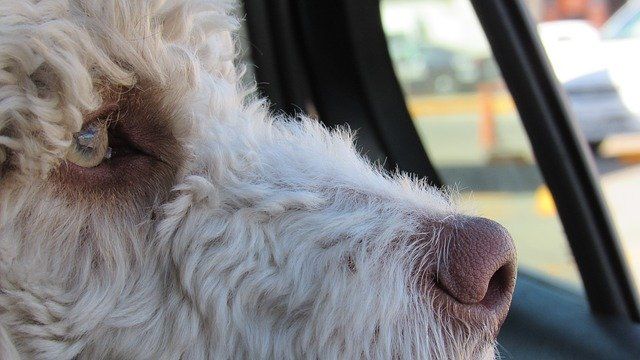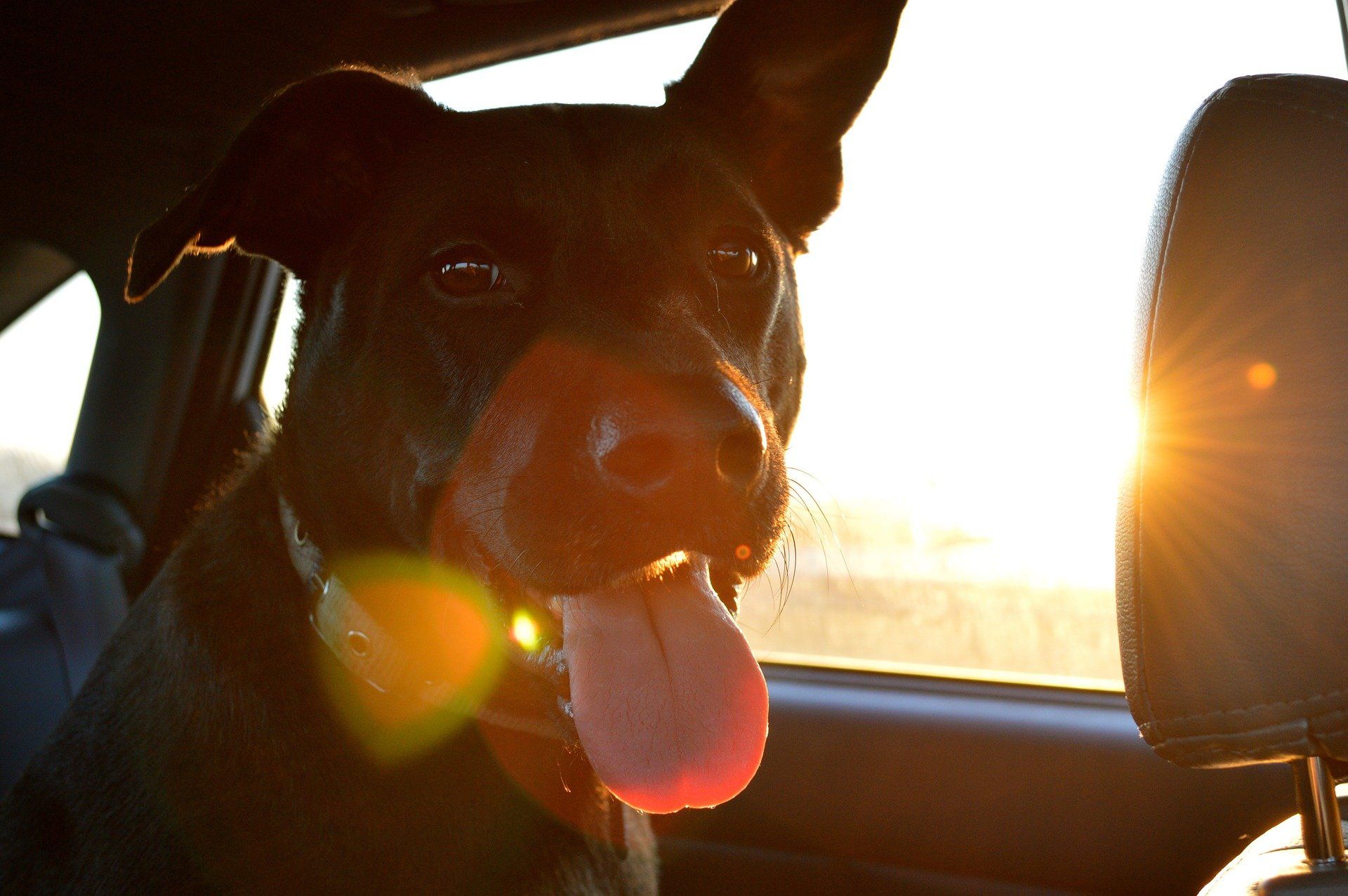TRAVEL SICKNESS
This can make life miserable for both pet and owner - and is SUCH a common problem.

- Vomiting
- Salivating
- Shivering
- Drooling
- Barking/Whining
- Restlessness
- Excessive yawning
- Fear/Reluctance to get into the car
Many young animals will grow out of the problem quite quickly, but a small percentage (approximately 10%) may need a little extra help!
Why do I need to worry about travel sickness?
If your pet hasn’t/doesn’t grow out of the problem, or the problem persists into adulthood, then journeys can become miserable and difficult for both your pet and yourselves! Whilst not life threatening it can put a real dampener on any journey and can make even simple trips in the car into a logistical nightmare.
If you suspect your pet is a sufferer from travel sickness then taking these steps initially may help alleviate the symptoms:
- Try not to feed your pet a large meal within the 4 hours prior to travelling.
- Try to have your pet facing forwards - sometimes using a special dog seatbelt on the back seat can help with this. You must ensure your dog is safely restrained in case of accident.
- If you travel your dog in a cage/crate - try and have it as open as possible so the dog can see out. Cages/crates do have the advantage of containing any vomit/dribble should it occur!
- Try to avoid the dog being in the boot of the car. Again using a proper dog seat belt and allowing him/her to sit on the back seats can reduce the movements of the car affecting the dogs.
- Have a window open slightly to equalise the air pressure in the car.
- Don’t throw the car around corners! Take it nice and slow and brake and accelerate carefully into and out of bends.
- Take regular breaks every hour or so and let the dog out on a lead to stretch his/her legs and remove any slight traces of motion sickness.
What about the more severe cases?
Sometimes, the tips above are not enough. Many dogs actually start to develop a phobia of travelling as they always associate the car with negative feelings or feeling poorly. Oddly this can then bring on the symptoms in its own right and then we have a vicious cycle developing.
These animals can often start to show other signs such as:
- Fear of getting into the car
- Motion sickness signs before car has moved
- Worsening of signs over time

These animals actually need some extra help and so the following can be done:
- Start a desensitisation program (see below)
- Try to change the cars your pet travels in so they don’t associate a particular vehicle with negative feelings.
- Strategic use of anti-motions sickness drugs (see below)
- Try to take trips initially with happy outcomes - “park not vets!”
How do I do a desensitisation program?
The idea behind a desensitisation program, is to gradually teach your pet that there is not need to be frightened, and also to build up a tolerance to the effects of travelling. You need PLENTY of time and planning to do a proper program. Each time you complete a “trip” you need to reward your dog with both lots of fuss and some treats as this reinforces positive emotions for the dog.
Week 1
Put the pet in the car in the drive/street and don’t even close the boot/doors and allow him/her to sit there for a few minutes at a time. The aim is to try and prevent the association of “car=moving”.
Week 2
Repeat as above, but this time close the door and allow the engine to run/idle but without moving the vehicle at all. This allows the dog to learn about the vibrations/sounds of the car, again without the association of “car=moving”
Week 3
Start with a very short journey of no more than 1-2 minutes. Literally you just want to go up the street and back again. This is to start to introduce “movement” but of such a small time that it is unlikely to trigger genuine motion sickness. You can increase the journey amount slightly each time - but we suggest no more than 5mins at a time. Also still reward/fuss the dog when you get back home successfully.
Week 4 onwards
- Try and find a walk/park that is no more than 5-10 mins away and take the dog here in the car on a regular basis (ideally every day). Again, this is to enforce a “positive outcome” to the journey and gets the pet used to a short journey.
- If you consistently find the dog does well, you can find places a bit further afield to try - but still increase the journey times very slowly.
- It is also (where possible) better to avoid having to break this regime with a long journey - such as holidays/vet trips etc. Try to plan your timings to minimise the likelihood of interrupting the program.
Are there any drugs/remedies available that can help?
There are several options than can help your pet deal with the actual physiologically problem associated with motions sickness.
- Ginger has been shown to help reduce the incidence of nausea. Either a small amount of stem ginger or more realistically you can use real ginger biscuits. Given an hour or so before travelling, has been effective in some animals to reduce the nausea.
- Prochlorperazine tablets can be prescribed to you your vet. These tablets are very cheap and suitable potentially for repeat/long term usage. This drug can reduce both the nausea/vomiting and anxiety associated with travelling but is only effective in around 70% of pets. This drug needs to be given at least 1-2hrs before the journey.
- Maropitant tablets can also be prescribed by your vet. These tablets are really quite expensive but are very effective to reduce the vomiting with motion sickness. They are effective in the majority of cases but due to the price, are usually only used in special circumstances such as long journeys or holiday trips. Again - this drug needs to be given about 2hrs before travelling, but does last 24hrs and so can be used for more than one journey.
- Sedatives/Tranquillisers . There are a number of drugs that we can use - either injectable or tablets. These may be used in exceptional circumstances and severe cases and are generally not suited to repeat or long term use. Your vet will discuss the use of these with you if required.
What is the chance of my pet being able to travel without problems?
With a combination of some slight changes to your routine, desensitisation and possible some drug intervention, there is a very good chance that you will be able to travel with your pet. You need to identify early if your pet is a travel sickness sufferer and do something about it as soon as possible. Sadly, we do see a very small percentage of dogs who can struggle even with this treatment.


